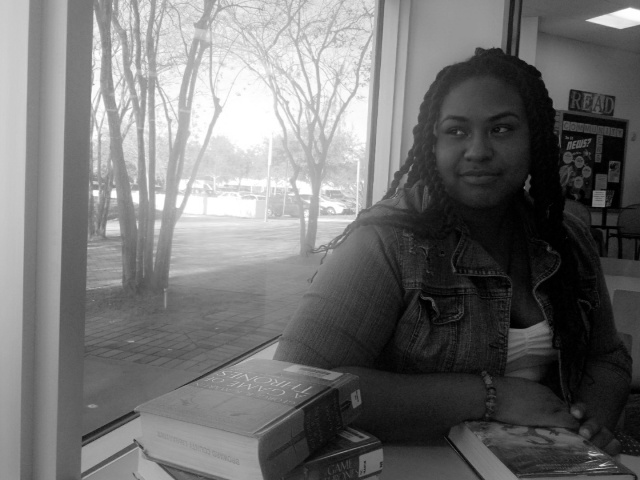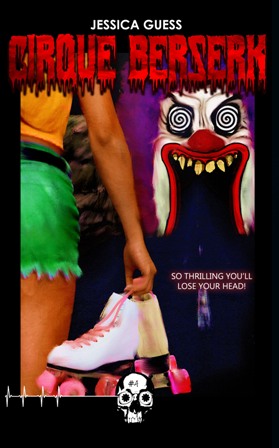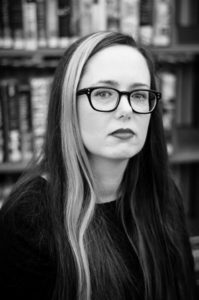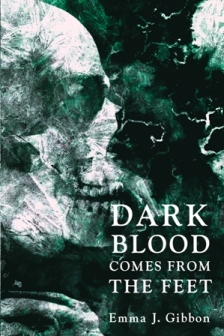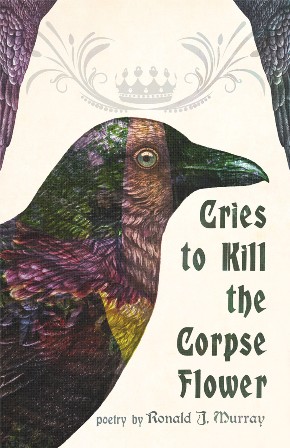Welcome back for this week’s author interview series! Today I’m thrilled to feature Lisa Quigley. Lisa is the co-host and co-creator of the award-winning podcast, Ladies of the Fright, as well as a horror fiction writer. Her debut novella, Hell’s Bells, was released earlier this year from Unnerving.
Recently, Lisa and I discussed her inspiration as an author as well as how music plays into her work.
A couple icebreakers to start: when did you decide to become a writer, and who are some of your favorite authors?
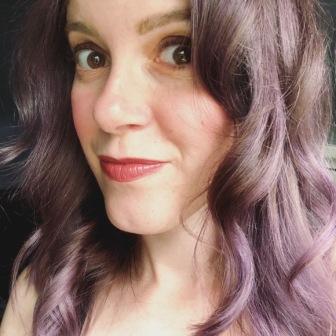 I don’t actually really remember deciding to become a writer. It’s like that Ursula K. Le Guin quote, “When people say, ‘Did you always want to be a writer?’ I have to say no! I always was a writer.” From as early as I can remember, I have been interested in books and stories and writing. I don’t know what it’s like to just read a book and enjoy it—although I do enjoy books—but for me, reading is always, and has always been, accompanied by an inner voice that says yes! I want to do this, too.
I don’t actually really remember deciding to become a writer. It’s like that Ursula K. Le Guin quote, “When people say, ‘Did you always want to be a writer?’ I have to say no! I always was a writer.” From as early as I can remember, I have been interested in books and stories and writing. I don’t know what it’s like to just read a book and enjoy it—although I do enjoy books—but for me, reading is always, and has always been, accompanied by an inner voice that says yes! I want to do this, too.
I have too many favorite authors to name them all here. But first and foremost, the most formative: Neil Gaiman. In my late teens/early 20s I drifted away from reading and writing (even though both always called to me) but a lot of it was feeling uninspired by what I read and and a lack of confidence in my own abilities. I knew I was a writer, but I didn’t think I had the talent. I didn’t know about things like revision yet! I thought, if it wasn’t coming out in a way that matched the books I read, that was that. Anyway, when I was maybe 19 or 20 or so, a boyfriend gave me Neil Gaiman’s Neverwhere. I had never read anything like it. Gaiman’s work opened me up to a whole new kind of story, a whole new genre. I really credit that discovery with leading me down the path to where I am now–the road to horror!
I also love Joe Hill, Kat Howard, Paul Tremblay, Josh Malerman, Grady Hendrix, Hailey Piper, Sara Tantlinger, and well, YOU! 😀 But truly, there are so many more authors I’m leaving off.
Congratulations on the release of Hell’s Bells! What can you share about the inspiration for your debut novella?
Thank you so much! I am so excited. It’s so weird because the inspiration for this book came from….everywhere. I pulled so many different pieces of my life from various times in my life and mashed them all together in a story. I think the germ of it, though, comes from my experiences growing up in an extremist-religious household. I had a best friend (who was a Christian) during my high school years, and it was so funky to navigate the intensity of teen friendship coupled with the unrealistic Christian expectations placed upon us. Emotions are already so heightened at that age, and you’re just trying to figure out who you even are in the midst of it. I wanted to write about what that felt like.
Hell’s Bells features a group of girls in the early 1990s, which brings to mind some films from around that time period like Heathers and The Craft. Did any films in particular inspire you as you were creating your group of female friends?
Oh man, I’m so glad you asked that! Clearly, I was a teen in the 90s. My characters are just a little older than me, because I wanted to write about a very specific time in the 90s and I needed them to be a certain age. But yeah, I mean, when pitching my book I have called it The Craft meets My Best Friend’s Exorcism. Those kinds of movies with “girl gangs” were a huge part of my teen years. And as much as I LOVE The Craft, for its nostalgia and cultural iconic ness (is that a word?) I also can recognize from the vantage point of time that it is problematic. There was a lot in that movie that focused on the toxicity of female friendships, and the danger of young women have “too much power.”
I also grew up watching allllll the teen movies. And SO MANY seemed to have this running theme of like…”being weird is not okay.” I am thinking of films like She’s All That and Never Been Kissed. In She’s All That, the guy doesn’t fall in love with her till she loses the glasses and paint-spattered overalls. Many of us likely remember the iconic scene of Rachel Leigh Cook walking down those stairs to “Kiss Me,” in that little red dress with her face made up and her hair in a chic cut and her glasses gone. There was also The Princess Diaries, where Anne Hathaway becomes desirable after her curly hair is smoothed into submission and her eyebrows are tamed. Or Miss Congeniality, where Sandra Bullock’s FBI partner doesn’t realize how incredible she is until she is turned into the perfect beauty pageant contestant. I could go on and on, but everyone probably gets it by now.
In my novella, I wanted to call back to that time and those experiences and those films, but I also wanted to subvert them.What if we owned our weirdness? Why should we change for anyone? And what if the girls’ friendship be the ultimate source of their strength, instead of their downfall?
Music is a huge part of your fiction. Do you listen to music while you’re writing, and if so, can you share a sample of your playlist?
It really depends. I go in phases. Sometimes I want to write in silence and sometimes having music on helps me really get in the zone. My writing-music tastes are very different from my listening-for-pleasure music tastes, though. I can’t really listen to music with lyrics or stories while I write. I get too distracted, I want to sing, I want to dance. So I need pretty ambient music for writing. Lately I pretty much only listen to the Interstellar Soundtrack to write. I haven’t even seen the movie, lol. But I was listening to a podcast (Sarah Enni’s First Draft, I believe) and it was recommended. And…I can’t really describe what happens to me when I listen to it. It’s like I escape through some writing-portal and write from a liminal space. There are so many different emotional highs and lows, it’s wonderful. Also, because I’ve used it so much to write to, I pretty much just have to hear the opening notes and it signals to my brain that it’s writing time. I love it!
Some of the other dark ambient music I enjoy while writing: Lustmord, Brian Eno, the It Follows soundtrack, Cities Last Broadcast, The VVitch soundtrack, Sleep Research Facility
The occult also plays a big role in Hell’s Bells. Were you like the girls in your story and fascinated by the occult when you were a teenager? Or has that interest in exploring it in your work come later?
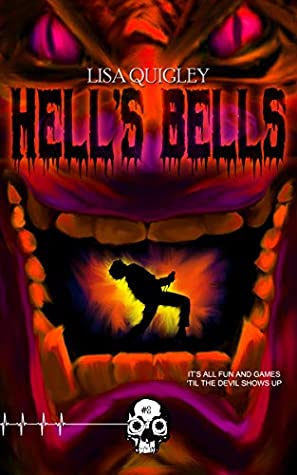 I have always been interested in the occult, but with my upbringing, I didn’t have much room to explore those interests as a teenager. I was instilled with a lot of fear and myth around it all. I mean, I did have a few “non-Christian” friends (rare) who would try “Light As a Feather” at sleepovers, or we’d have “seances” (all inspired by The Craft, by the way.) But it was always half hearted and with a lot of giggles. It always intrigued me, but I had a lot of fear around it to unpack.
I have always been interested in the occult, but with my upbringing, I didn’t have much room to explore those interests as a teenager. I was instilled with a lot of fear and myth around it all. I mean, I did have a few “non-Christian” friends (rare) who would try “Light As a Feather” at sleepovers, or we’d have “seances” (all inspired by The Craft, by the way.) But it was always half hearted and with a lot of giggles. It always intrigued me, but I had a lot of fear around it to unpack.
As I got older, and as I veered away from a Christian worldview, I was always interested in witchcraft. Reading about the occult and alternative spiritual paths has been a huge part of my own personal development so I think some of that will always seep into my writing. But I also like to approach it all with a sort of “reverent irreverence” (phrase borrowed from a favorite witch, podcaster (The Witch Wave), and writer of mine, Pam Grossman.) I treat my spirituality with a sense of play, never wanting to get too caught up in my own “dogma.”
In addition to your writing, you’re also a podcaster! You and Mackenzie Kiera host the award-winning Ladies of the Fright. How did your podcast come about, and what’s been the most surprising or exhilarating part of doing the show?
Mackenzie and I met in graduate school (UCR Palm Desert Low-Residency MFA program….an incredible experience!) and were pretty much joined at the hip upon meeting. We had always wanted to collaborate, but we weren’t sure exactly how or what that project would be. We had talked about starting a literary magazine or something similar, but it never felt right (or like it was work we actually wanted to take on!)
In the middle of 2017, I moved from California (where I had lived for 11 years) with my husband and 8 week old son (!!!) across the country to New Jersey. My husband is from here, and we really wanted family support after our son was born. There is so much for us here, and it’s clearly where we are meant to be, but I have struggled to root into my new life here. I feel a lot of grief for the life I left behind, the community I worked so hard to build. It was hardest in the beginning, when I was immersed in the underworld of postpartum (which can already be an isolating time) while also feeling severed from my community. I was lonely and sad and uprooted.
I started listening to podcasts while I walked with my son, and one day I texted Mackenzie, we should start a horror book podcast. We’ll just read and talk about the books we like, since we are doing that anyway. Why not record our conversations? Maybe one day we could interview some authors too. She was all about it and in two months, we had the show up and running. We had no idea it would even resonate with anyone! We just wanted a way to feel connected from across the country, and to be creative in a more connected way. Writing is in our blood and it’s lovely, but it can get lonely. And there is a lot of waiting involved. Waiting for rejections (mostly, ha!) and acceptances. This gave us a new project to be excited about—one where we had creative control and didn’t have to wait for a “yes” on, either.
The most surprising and exhilarating part? First—that anyone else listened or cared! We were just doing it for us. In a lot of ways, it was a creative lifeline. We had no concept that anyone might actually be interested in hearing what we had to say. I think the most exhilarating moment was at Stoker Con 2019 (last year, when we could breathe around each other, ha!…feels like a million lightyears away!) We had just finished moderating a packed panel, and afterward someone came up to us, all excited. She told us that she and her husband were huge fans of the show and they listened to the show together. She asked if she could get a picture with us, and said her husband would be so jealous she got to meet us! It was such a surreal and special moment!
What are you currently working on?
I’ve just put the finishing touches on a novel (currently called The Forest, but that could always change if it’s published?) I wrote that book while in the darkest part of postpartum, and the idea came to me when I used to walk in the woods with my son strapped to my chest in a baby carrier. It was my way of processing my experiences of new motherhood and postpartum anxiety. I’m currently shopping it around to a few places, nothing concrete—but the book has my whole heart in it and I believe it will exist in the world some day.
Beyond that, I’m just playing—I’m in the early stages of conceptualizing a few different projects, and enjoying being in this creative space where ideas are percolating but not quite risen to the surface. It’s a very mysterious part of the creative process and I’m leaning in to it.
Where can we find you online?
Social media: I’m on Twitter and Instagram as @ laquiglette. I’m also working on revamping my website, which is down right now, but will be www.lisaquigley.net once I get it up & running again. And of course, you can find the podcast at www.ladiesofthefright.com, twitter @ LOTFpod, and Instagram @ ladiesofthefright.
Thank you so much for having me! It’s been a delight!
Big thanks to Lisa Quigley for being part of this week’s author interview series!
Happy reading!
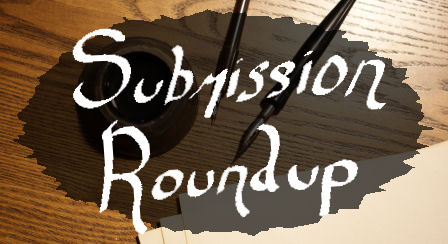


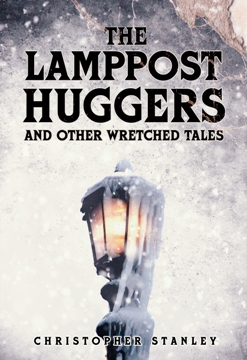


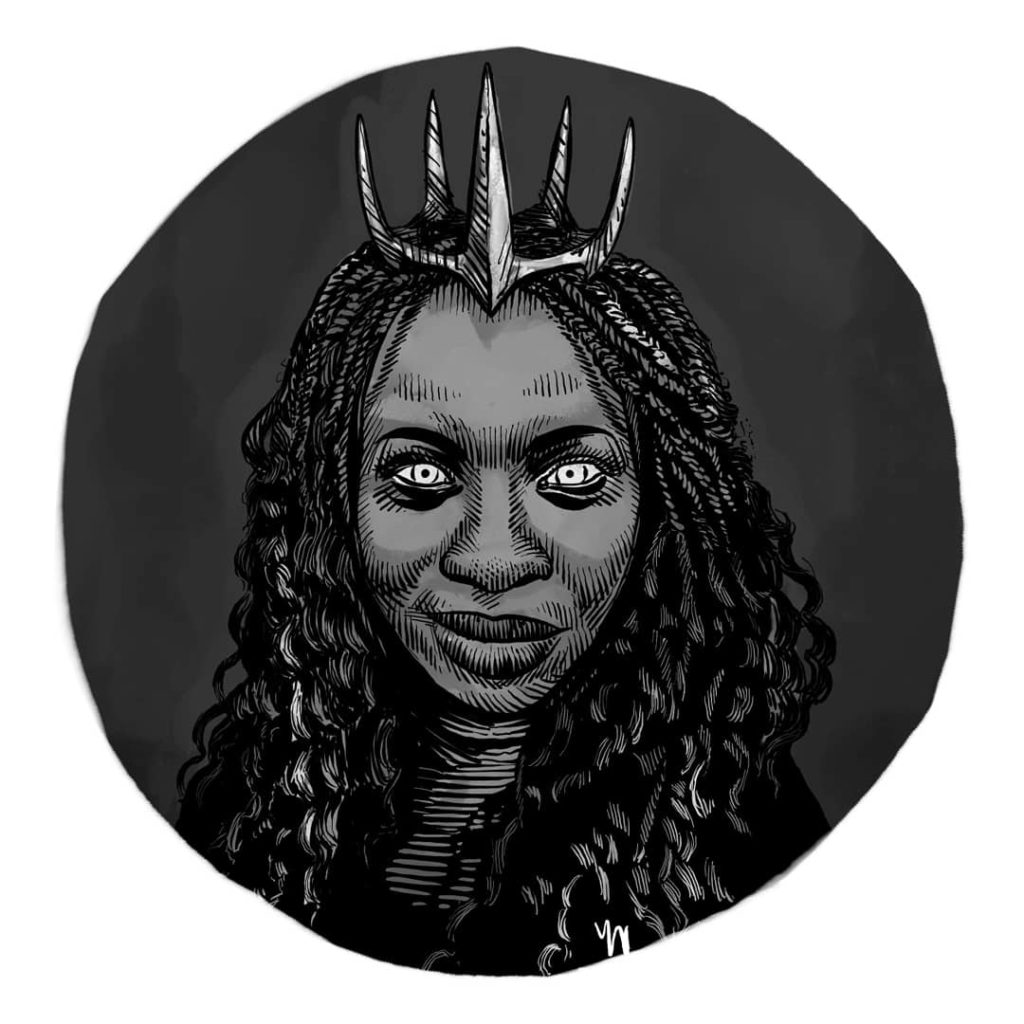
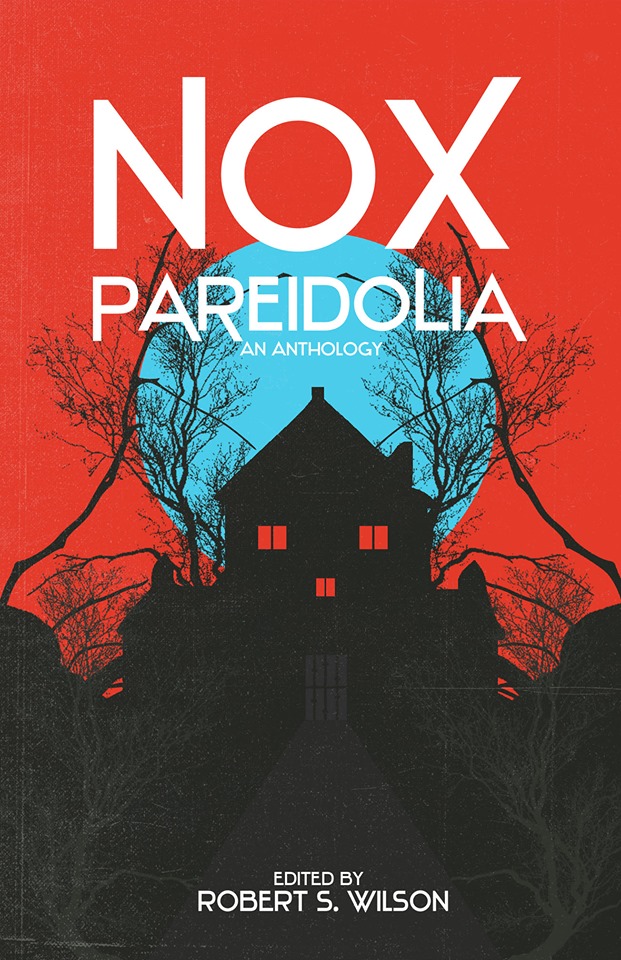
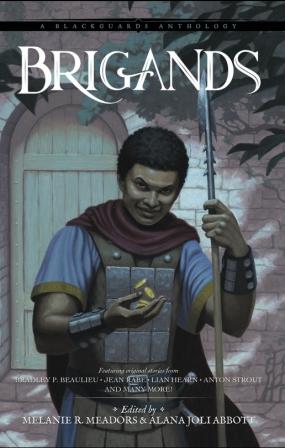
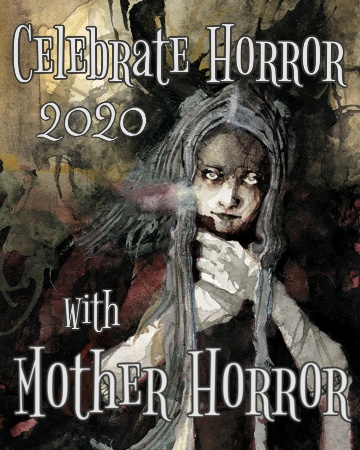 Nightworms’ Celebrate Horror 2020 with Mother Horror
Nightworms’ Celebrate Horror 2020 with Mother Horror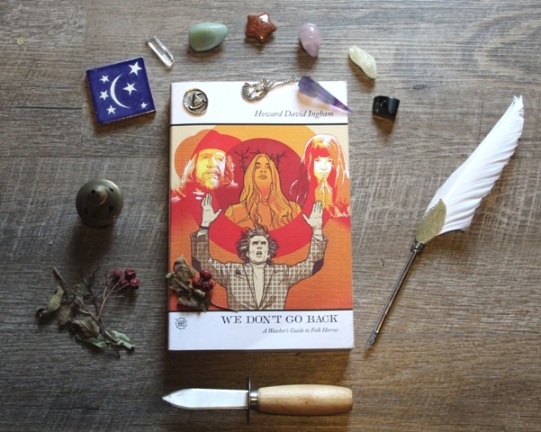 Howard David Ingham’s Lecture Series
Howard David Ingham’s Lecture Series Raw Dog Screaming Press’s Literary Events
Raw Dog Screaming Press’s Literary Events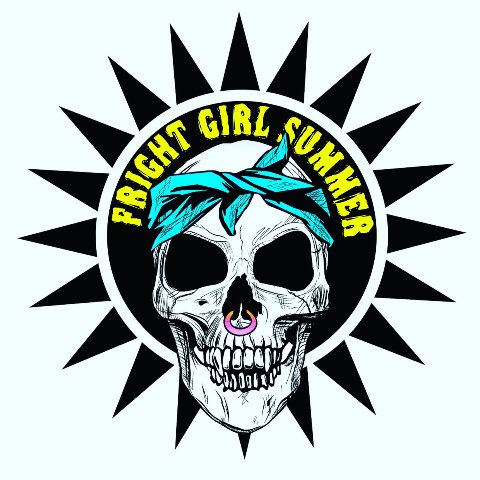 Fright Girl Summer
Fright Girl Summer